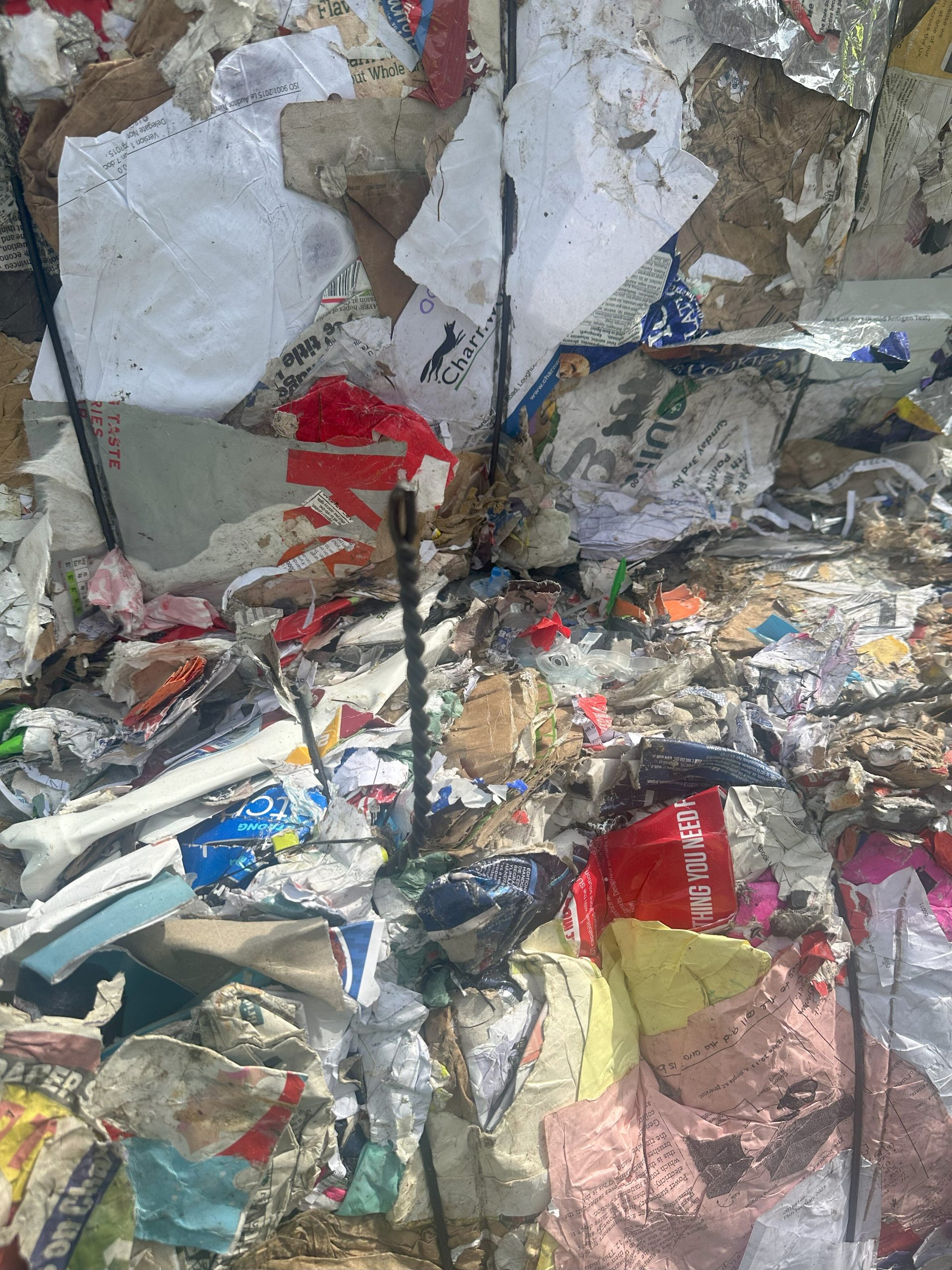Mixed Fibre.

Complete the form below or call Clearpoint on +44 (0) 1423 855978 if you would be interested and what prices you can offer?
Product Information
Grade: Mixed Fibre
Expected weight: 24 MT
Stored: Outside
Expected Haulage Type: Curtain or container.
EWC Code: 19 12 01
Load Frequency: weekly
Material Background: Recovered from domestic co-mingled kerbside collections taken to the MRF. The first step sees the waste enter a metering bin which ensures a smooth and even flow of material into the system. Its carbide teeth also ‘opens’ up any closed bags. The material from the Metering Bin is conveyed to a Pre-Sort Cabin where quality inspectors remove any oversized general waste materials and recover target materials such as plastic film. From the Pre-Sort Cabin, material flows on to the OCC Screen. Here, rigid cardboard floats over the screen and after final quality checking is conveyed directly to a dedicated storage bunker ready for baling.
The first section of the OCC Screen is fitted with hardened metal discs, which assist with breaking of glass bottles and jars and ensure that glass is removed from the mixed material at the earliest possible opportunity. The OCC screen discs are sized to separate material into two different size fractions:
· 0-100mm
· 100mm+
The 0-100mm material falls through the OCC Screen onto a Debris Roll Screen (DRS). This DRS is sized to separate material of less than 50mm (principally glass and shredded paper) and once extracted this material is transported to the Glass Clean Up System where the lighter non-glass material is removed and recovered, using magnets and aspiration. The glass produced is transported directly to storage bunkers.
The 50-100mm material, which tends to be highly compacted and flattened plastic bottles and tin cans, is conveyed directly to a second DRS. Here paper is removed by additional aspiration and any remaining glass is removed by further screening. The remaining plastic bottles and cans enter the Container Sorting section of the system. The 100mm+ material, mostly newspapers and magazines, smaller papers and the un-compacted plastic bottles and cans, flows through the OCC Screen and is conveyed to our NewSorter Screens. These screens separate the newspapers and magazines from the rest of the mixed material. The newspapers and magazines are then conveyed to the De-inking Screen, which removes any rigid paper (light card packaging). The newspapers and magazines are transported to a Quality Inspection Cabin, where material quality is checked and any remaining plastic film (plastic film tends to travel with all material streams and needs careful monitoring throughout the process) is removed. Film is transported by pneumatic extraction to dedicated processing bays. The finished newspapers and magazines are conveyed directly to a storage bunker.
Material falling through the NewSorter Screens is conveyed to the Polishing Screen. The Polishing Screen does the final separation of the remaining mixed papers from three dimensional plastics and cans. The mixed paper from the Polishing Screen joins up with the material from the De-inking Screen and is conveyed to the Quality Inspection Cabin where a combination of manual inspection and optical sorting technology removes and recovers any non-target materials.
Tied: Galvanised ties
